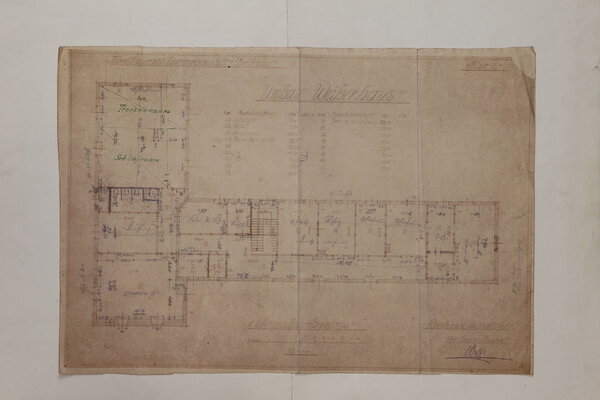Women's house
The building on the other side of the roll-call area was built on the north side across from the monastery church shortly after the Breitenau workhouse was opened and was used as a "women's house". It has remained largely intact to the present day but was plastered white in the post-war period. The female prisoners were separated from the male prisoners by a wall (at the level of the former prison kitchen). The building itself included numerous rooms to house people, particularly on the first floor. These rooms were sometimes occupied by up to 14 women. The attic room was converted into usable space in 1940. In addition to forced workers from various European countries, German women were also among the prisoners during the period of the "work education camp" (AEL) from 1940 to 1945. More than half of them were imprisoned in Breitenau for violating the so-called Umgangsverbot, a law prohibiting "illicit encounters". The German population was strictly forbidden to have any contact with Eastern European forced workers and prisoners of war. If German women violated this law, they were often punished with imprisonment in concentration camps or in an AEL. Eastern European forced workers and prisoners of war were often punished by death for violating this law. Many female prisoners were deported from Breitenau to the Ravensbrück concentration camp, the largest women's concentration camp in the German Reich.

Media:
Building plans "Umbau Weiberhaus" (Conversion of the Women's House) 1919 (LWV archives, map collection, no.1007)